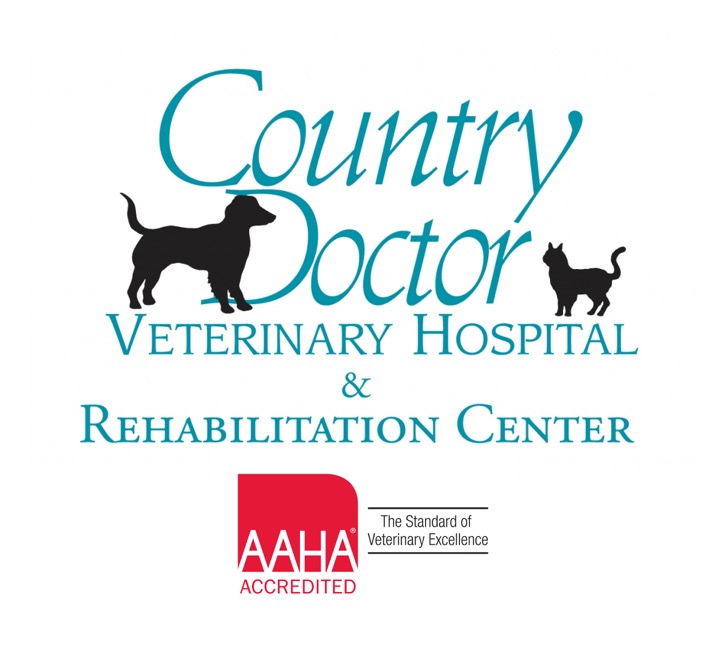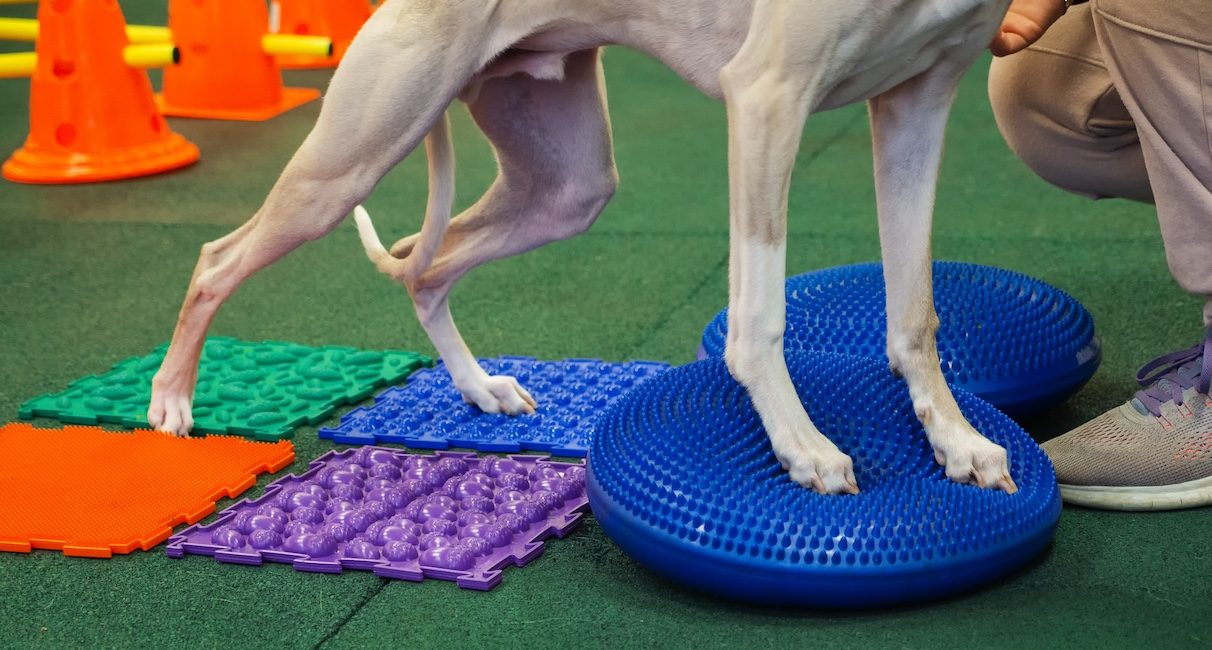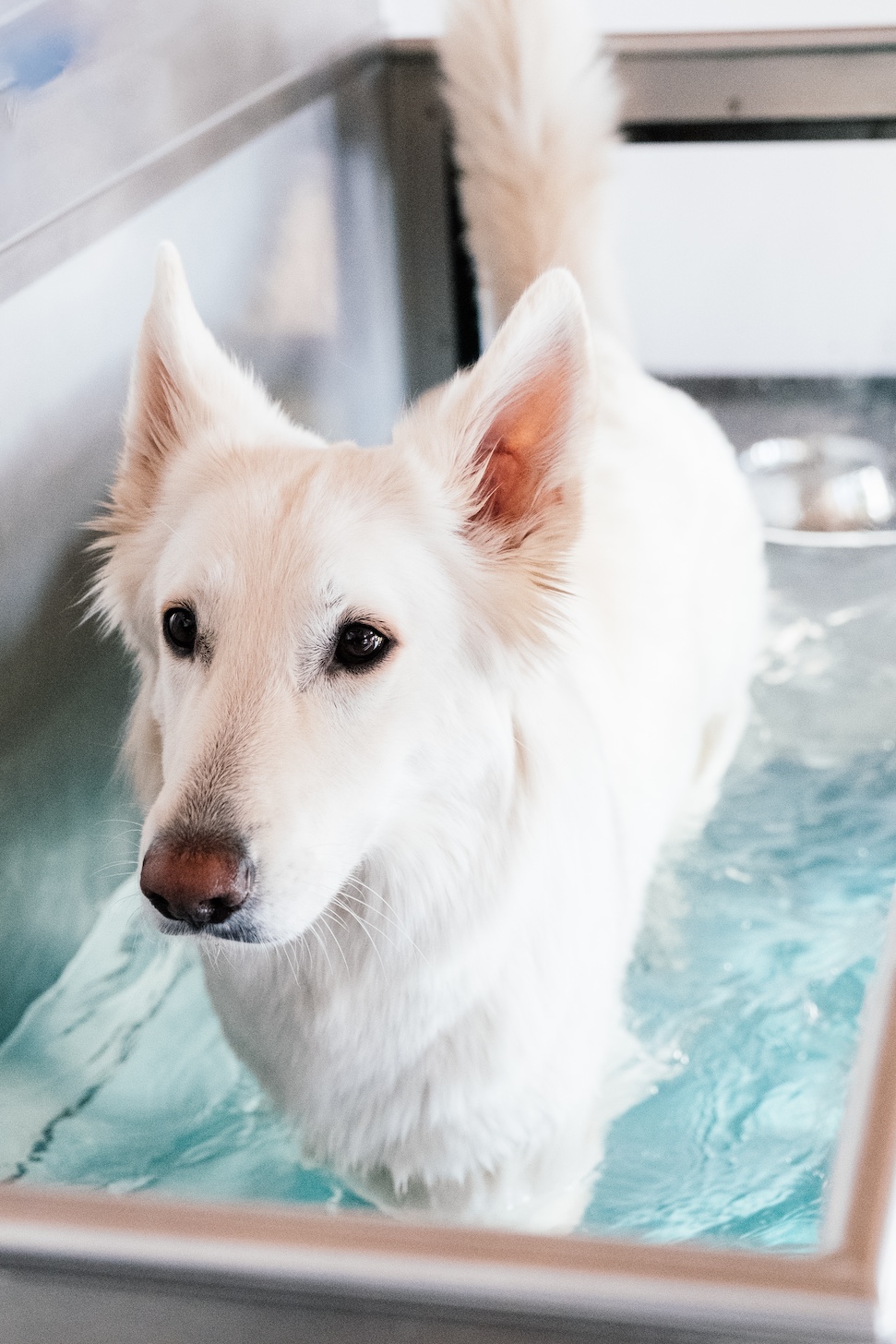Our goal is to provide quality rehabilitation care for companion animals with orthopedic or neurological problems such as: hip dysplasia, intervertebral disc disease, degenerative myelopathy, postsurgical recovery, obesity and chronic pain. Our approach is case based; this means each patient receives the personalized care and program that fits his or her individual needs. Each patient will be assessed and measured prior to beginning any program. This allows a more objective evaluation as rehabilitation progresses
Canine physical rehabilitation is dedicated to improving the quality of life for dogs suffering from physical impairments, injuries, or chronic conditions. By utilizing various therapeutic techniques, rehabilitation aims to enhance mobility, reduce pain, and promote overall well-being.
We offer a wide variety of conditioning and rehabilitation therapy including underwater treadmill, therapeutic exercise, neuromuscular electrical stimulation (NMES), transcutaneous electrical nerve stimulation (TENS), therapeutic ultrasound, strength training and more.
We will work closely with your veterinarian or surgeon to ensure the best overall care for your pet. The Center is supervised by Dr. Kelly Trexler-Wertman, DVM, CCRP. Dr. Trexler- Wertman received her certification in rehabilitation from the University of Tennessee. She is assisted by Jill Skoutelas, CVT who is also certified in canine rehabilitation from the University of Tennessee.



